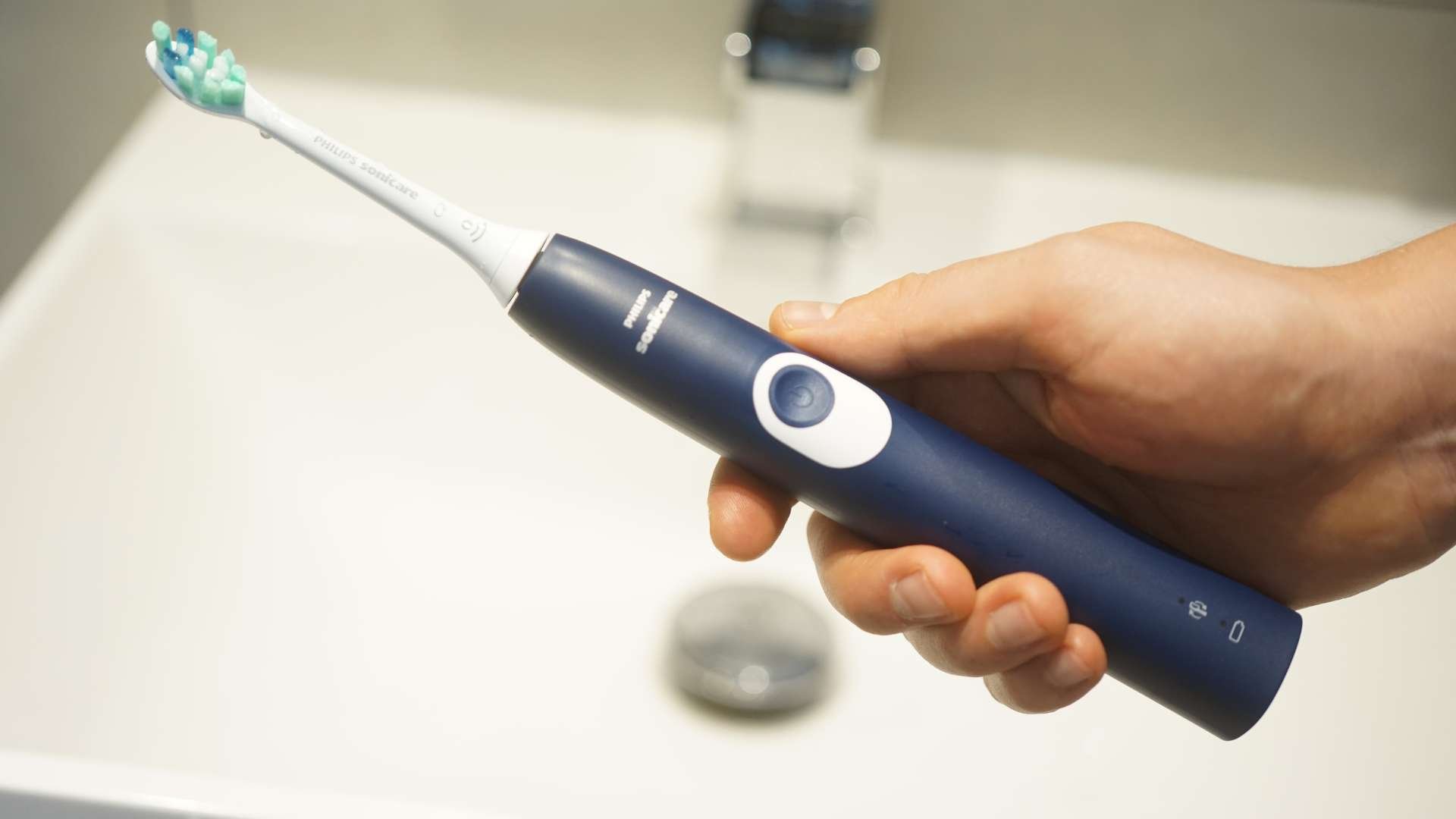
A fantastic electric toothbrush - buy if the price is right
Providing a great clean of the teeth, this simple to use brush comes with dentist recommended features.
It’s a must buy if you can pick it up for a fair price of £60-70.

Pros |
Cons |
|---|---|

2 intensity settings – choose between low & high power |
Variable pricing |

Reminds you when to replace your brush head |
Brush-sync heads are expensive |

Long battery life |
The price fluctuates, it’s worth considering other brushes
£129.99 is the retail price of the 4300 ProtectiveClean.
For a long time, the average price was a much more sensible £60-70. It’s one of the best Sonicare toothbrushes for this money.
In recent times the selling prices have risen with more volatility and less consistency between stockists. Don’t pay more than it’s worth.
Variants with a travel case in the box are worth spending an extra £5-10 for.
Replacement heads cost £7 each. This makes the 3 year ownership cost around £147.
Given that our top recommended electric toothbrush, the Oral-B Pro 3 3500 costs £78, the 4300 appears expensive. This is because Sonicare heads are about twice the price. You’re certainly not getting twice the cleaning results.
If you particularly want a sonic toothbrush, the 4100 Series is very similar but more affordable. The battery life isn’t as good, about half the 4300’s. Its motor doesn’t produce quite the same brushing intensity either, but it’s not a deal breaker. Only existing Sonicare toothbrush users might notice the subtle difference.

A month's worth of battery life
A little over 5 weeks of usage time is achievable using the 4300. That’s over twice as long as claimed.
The rechargeable Lithium-Ion (Li-Ion) battery is sealed inside the handle. It surpassed my expectations and put this right up alongside the better performing brushes.
Long battery life isn’t essential, but certainly nice to have, particularly if more frequent recharging is inconvenient.
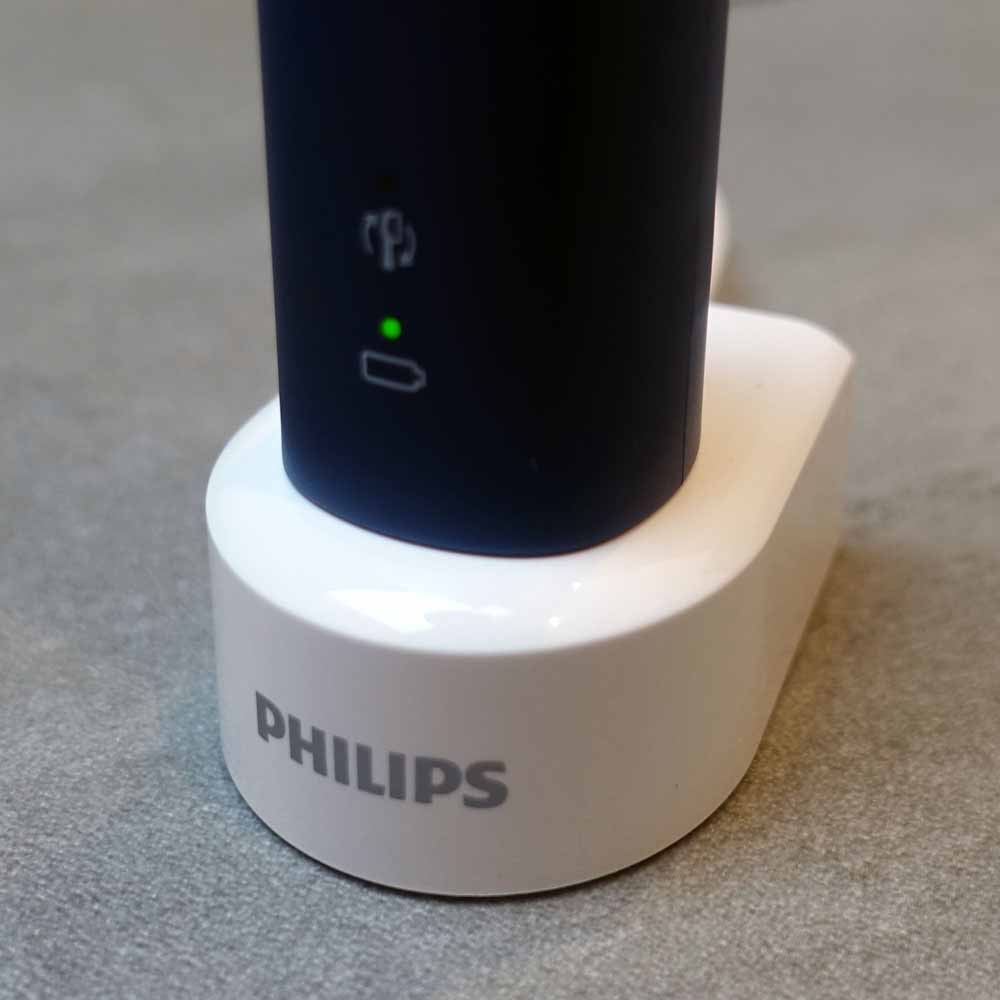
Battery charge feedback is provided via the colour changing and flashing LED on the handle. Surprisingly handy is the beep and vibration emitted when power is really low. It’s a subtle feature that makes daily use with a Sonicare brush stand out against the competition.
A 2 pin charging stand, suitable for UK bathrooms is included. To charge from a 3 pin socket you will require an adapter, which you will need to buy separately.
The protuberance on the top fits into the base of the handle and takes up to 24 hours to replenish it fully. Supporting 100-240v you will need a plug adapter if you want to use the stand internationally.
The essential, dentist recommended features
Our in-house dentists like to see 3 key features in an electric toothbrush. A 2 minute timer, a pacer and a pressure sensor. The 4300 has them all.
You can switch between 2 brushing intensities
It’s easier to get brushing with the ProtectiveClean as you have less choice of modes. It has 1 cleaning mode, with the choice of a high or low intensity.
Pressing the power button switches between these. You don’t have any model labels on the handle to show which is active. It is easy to tell the difference between them based on the brushing sensation and sound.
The high mode is my preference as it delivers the most satisfying clean. This is the mode you want to use most of the time.
Low is ideal if your gums feel a bit tender or inflamed. It’s arguably a sensitive mode and does make a good choice for new electric brush users.
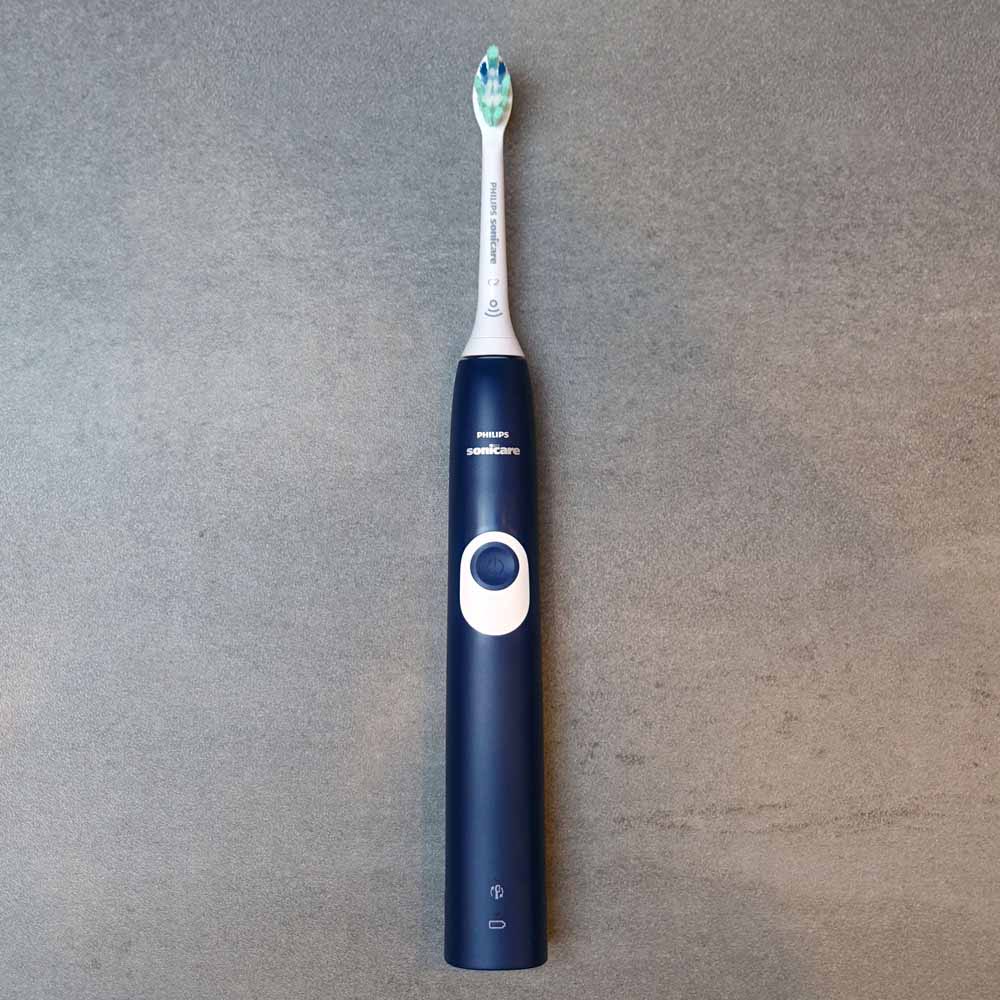
The 2 minute timer and pacer encourage even brushing of your teeth
Too few people brush for the recommended amount of time. Having a timer built into a brush helps encourage us to clean for longer. The 4300’s timer is well thought out. This is because it powers off the brush automatically, once 2 minutes have passed. If you turn the brush off manually, you know you haven’t brushed for long enough.
Brushing for the right duration is one thing, but another is to give all your teeth fairly equal attention. You need to brush the inner, outer and biting surfaces of the teeth. Failing to do so can lead to problems long term.
To help with this the 4300 has a pacer built in. At 30 second intervals, the timer pauses the bristle motion. It creates a change in the sound and brushing sensation. This is your cue to move between the 4 sections of the mouth until all have been brushed.
The pressure sensor helps to stop you from brushing too hard
Too much pressure can cause wear on the teeth and gums. Long term, this can result in irreversible damage. The 4300’s built-in pressure sensor can help you if you know you brush too hard.
The handle vibration pattern changes if it detects too much force. At the same time, the brushing sensation and sound alter.
Once pressure is relieved the sound changes and the vibration pattern stops. You’ll soon learn what’s too much. But like me, you will still activate the sensor from time to time. Don’t panic. The aim is to prevent frequent forceful brushing.
Unlike Oral-B brushes that often have a large visible LED to alert you, the 4300 ProtectiveClean does not.
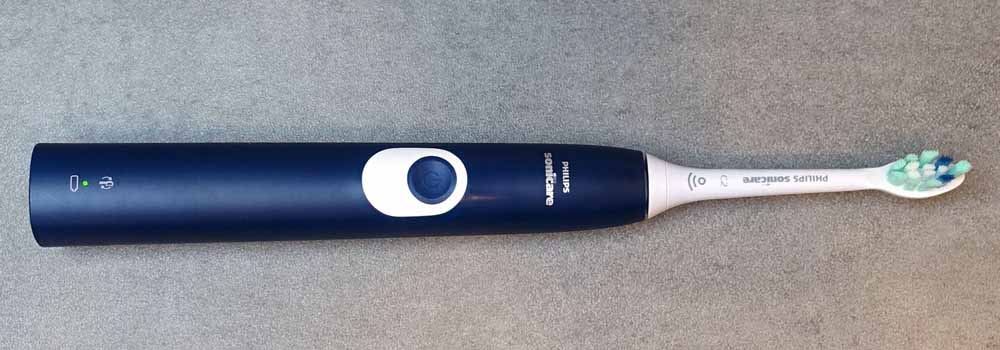
Cleaning results your dentist will be proud of
I want to get that ‘well done’ from the dentist each time I go for a checkup. It’s certainly possible when using the ProtectiveClean. The cleaning results are superb.
The sonic cleaning action causes rapid movement of the bristles which essentially tickle the gum and tooth surfaces. It can take some getting used to. It feels soft but effective too. The movements feel less harsh than a round Oral-B head.
62,000 bristles movements per minute are achieved on the high power intensity. This is the same number as premium models. The power and intensity feel stronger than the more affordable 1, 2, 3 and 4000 Series brushes. Their motors are tuned differently.
Sonic heads are similarly sized to most manual brushes, covering 2-3 teeth at a time. They don’t always suit smaller mouths. They can be harder to position in the tightest spaces. If you know you have a cramped mouth, Oral-B’s round brush heads might be better suited to you.
Philips offers a complicated range of interchangeable heads that fit the 4300. Just pull off the existing one and push on a new one. The C2 Optimal Plaque Defence is normally supplied and is our top pick as is a good all-round option. You don’t need heads specifically designed to whiten etc.
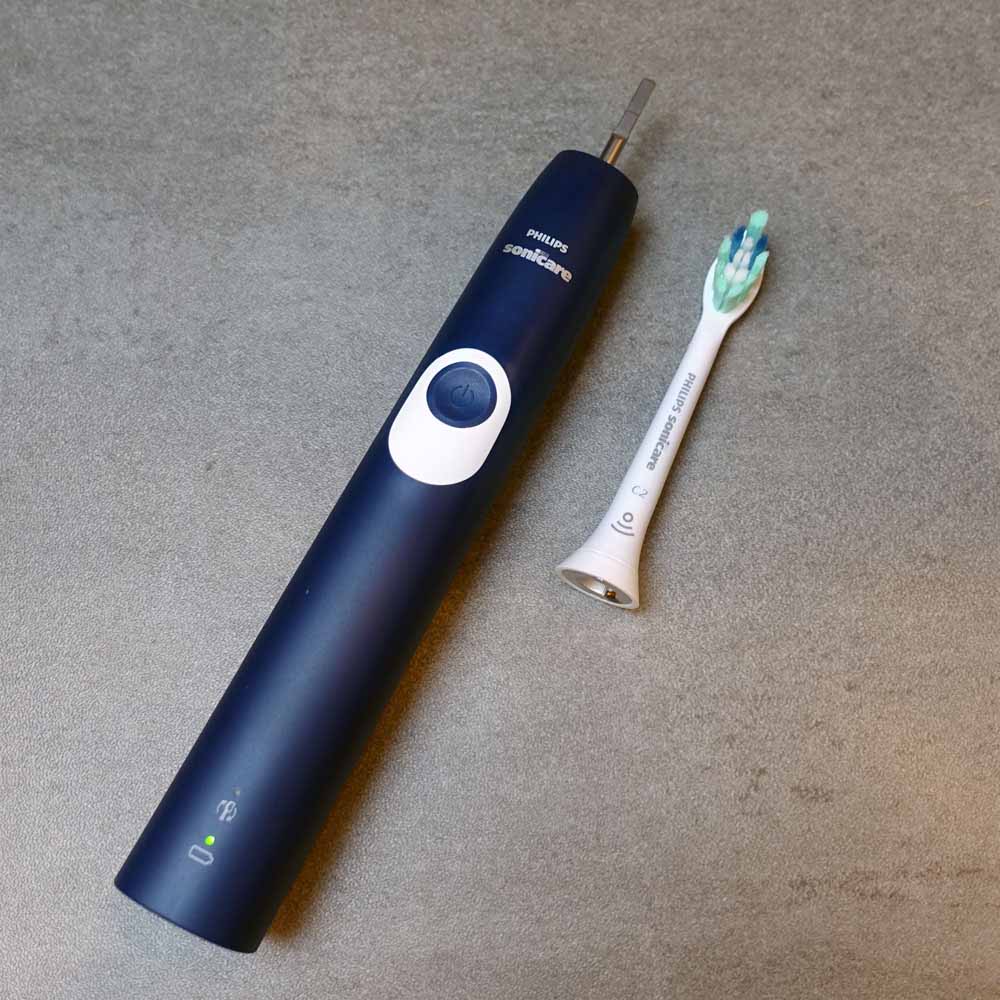
The minimal handle design looks good
Sonicare has set the standard for material quality and product design for some time. The 4300 continues this trend.
Durable and quality feeling in the hand
Design and how a product looks is personal opinion, but many agree that Philips make even their more affordable brushes look better.
The 4300 has a matt finish to the plastic handle that looks more premium, classy and refined than the glossier options from the competition.
The water resistant handle doesn’t have lots of textured surfaces. Yet, there is a resistive feeling when you move the fingertip down the smooth sides of the handle.
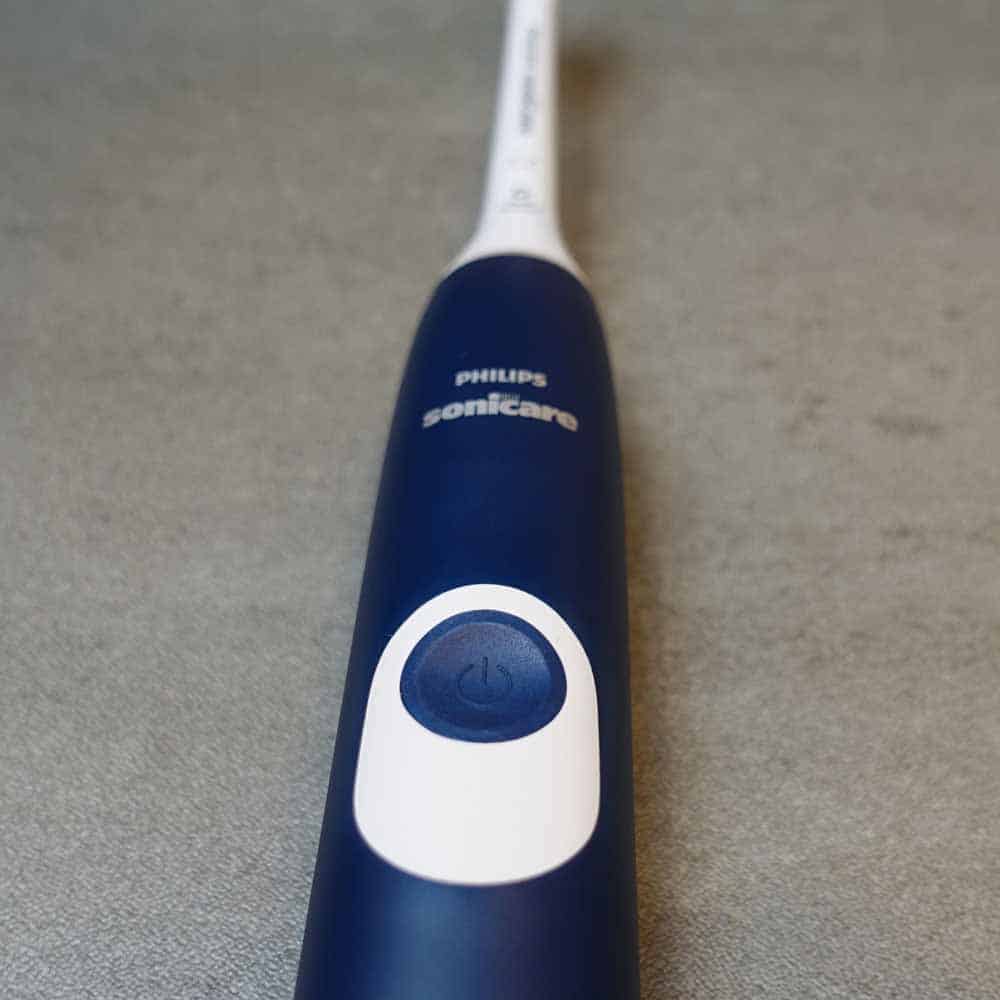
It isn’t awash with buttons and controls, it has a clean and minimal appearance which helps with keeping it clean.
Of about average size, it is a bit heavier than the likes of the 1100 Series.
Well balanced when rested in the palm, it feels reassuringly solid when you give it a firm squeeze. Construction seems top notch, I’ve no immediate concerns.
It stands upright on a countertop and strategically placed nodules on the rear of the handle help prevent it rolling when laid flat.
The optional travel case provides protection when on the go
Different variants of the 4300 ProtectiveClean exist.
Technically they are the same, the difference is the handle colour and accessories in the box.
Some come with a travel case that holds the handle and up to 2 brush heads. This is very convenient even for irregular travellers. If you can buy a version with a case and spend no more than an extra £10, it’s a worthwhile investment.
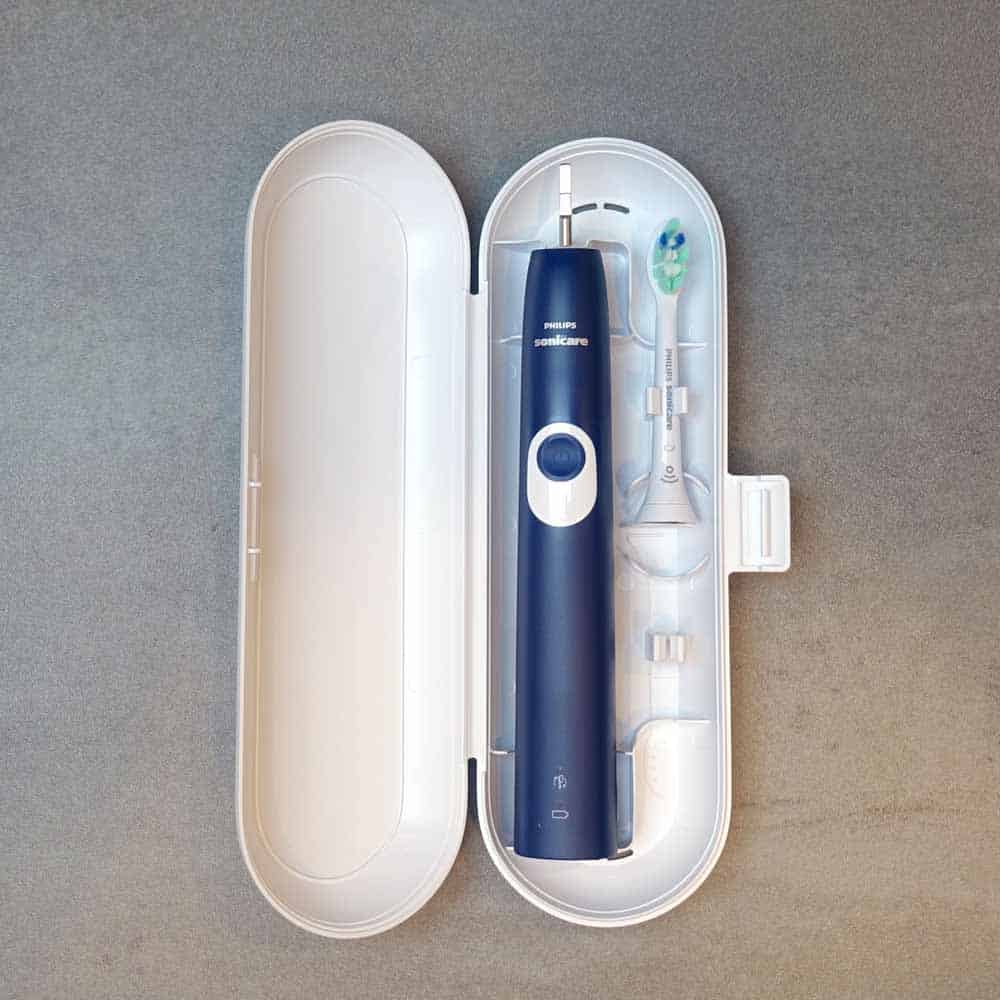
You’ll be reminded when you need a new brush head
Thanks to a Radio Frequency Identification (RFID) chip built into the base of the brush head, the 4300 can track your brush head usage.
Based on your brushing time, pressure, and frequency, it alerts you when the head requires replacement. You will see an amber light on the handle. You will still get the fading bristles in the head itself, which you might be familiar with.
The tech that makes this possible is called BrushSync. It is not an essential feature you need in a toothbrush. That said, if you know you often use a brush longer than the recommended 3 month period, it could be valuable to you.
Prolonged use of a head can mean worn bristles, and less effective, more abrasive brushing.
The vast majority of Sonicare heads are BrushSync enabled. It is possible to buy off brand heads and save money or pick up originals without the chip. Heads without the chip won’t be tracked.
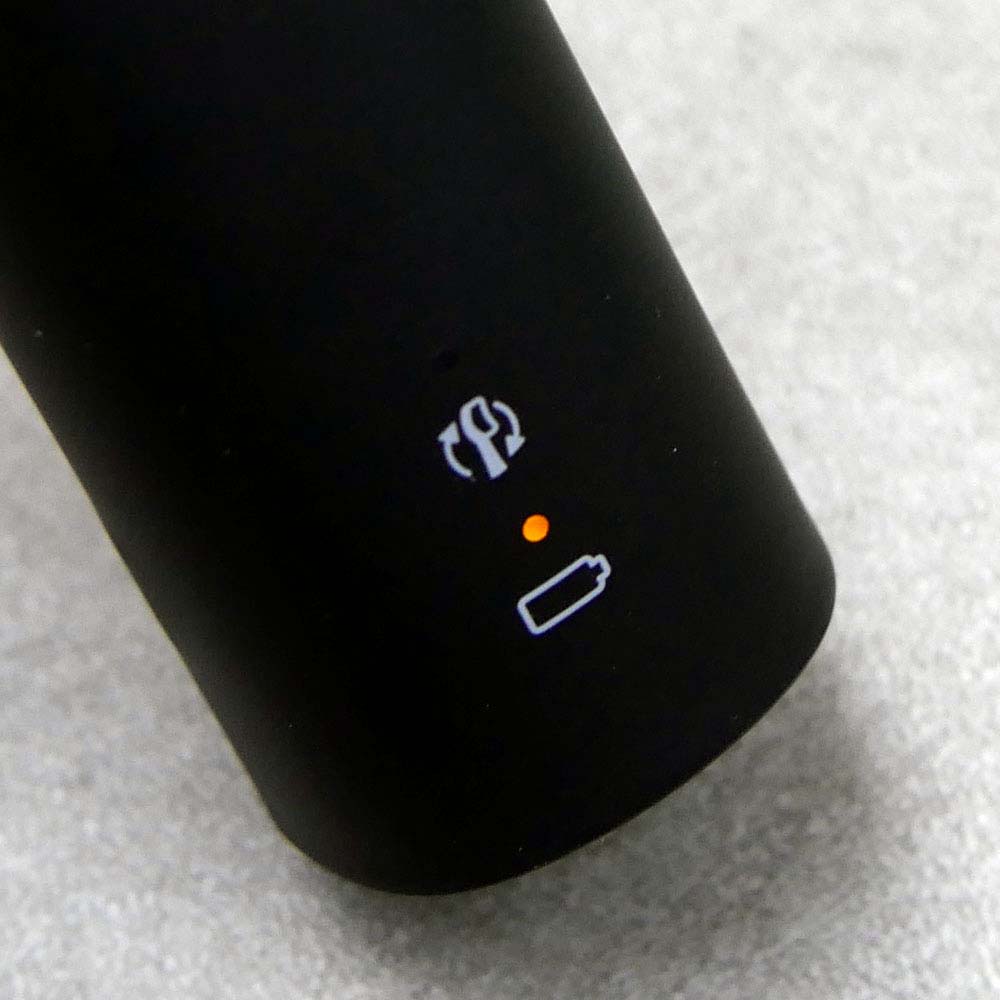
2 year warranty is 1 year less than Oral-B’s
An industry average 2 year warranty against defects and workmanship is provided. It’s not quite as good as the up to 3 years Oral-B offers with their brushes.
With many years of manufacturing experience, it’s not to say reliability is worse. My use reveals no reason to be concerned, you just haven’t got that added protection. Given the higher price, it’s fair to expect comparable services.
No parts on the 4300 are designed to be user serviceable thus, should it fail, in most cases, they will send you a new brush.
With a need to move to more sustainable approaches the lack of repairability is disappointing.
Environmental impact
We don’t know the exact environmental impact of this particular model, but as a general rule the impact of electric toothbrushes is around 11 times more than a manual brush.
RFID-enabled brush heads further add to its planetary impact.
The brush heads are made of petroleum based plastic rather than more sustainable plant-based plastic.
Philips has partnered with schemes such as TerraCycle to recycle consumables such as heads, but using this facility isn’t always easy.
Conclusion: price dictates whether it's worth buying
It’s everything you could need and want from an electric toothbrush.
Great cleaning results, good battery life, timer, pacer and a pressure sensor - it ticks all the boxes.
I’d buy it without hesitation at around £60. If it’s more than £70 opt for the 4100 Series. You’ll save money with limited compromise.
Size guide
- Toothbrush height with head - 25cm / 9.8 inches
- Toothbrush height without head - 19cm / 7.5 inches
- Width - 2.8cm / 1.1 inches
- Depth/thickness - 3cm / 1.1 inches
- Weight with head - 130g / 4.6oz
- Weight without head - 125g/ 4.4oz
- Package weight - 282g / 10oz
Noise
- 60dB
Country of manufacture
- China
FAQ
How to turn on and off EasyStart
- Put the handle on the plugged-in charger.
- Press and hold the power on/off button while the handle remains on the charger.
- Keep the power on/off button pressed until you hear a single short beep (after 2 seconds).
- Release the power on/off button.
- Triple tone of low-med-high means the EasyStart feature has been activated.
- The brush head replacement light and battery light will also blink green 3 times in unison to confirm activation.
- -Triple tone of high-med-low means the EasyStart feature has been deactivated. The brush head replacement light and battery light will also blink amber 3 times in unison to confirm deactivation.
How to turn on and off brush head reminder
- Put the handle on the plugged-in charger.
- Press and hold the power on/off button while the handle remains on the charger.
- Keep the power on/off button pressed until you hear a series of two short beeps (after 4-5 seconds).
- Release the power on/off button.
- Triple tone of low-med-high means the Brush head replacement reminder feature has been activated. The brush head replacement light and battery light will also blink green 3 times in unison to confirm activation.
- Triple tone of high-med-low means the Brush head replacement reminder feature has been deactivated. The brush head replacement light and battery light will also blink amber 3 times in unison to confirm deactivation.
How to turn on and off pressure sensor
- Put the handle on the plugged-in charger.
- Press and hold the power on/off button while the handle remains on the charger.
- Keep the power on/off button pressed until you hear a series of three short beeps (after 6-7 seconds).
- Release the power on/off button.
- Triple tone of low-med-high means the pressure sensor feature has been activated. The brush head replacement light and battery light will also blink green 3 times in unison to confirm activation.
- Triple tone of high-med-low means the pressure sensor feature has been deactivated. The brush head replacement light and battery light will also blink amber 3 times in unison to confirm deactivation.
- If you continue holding the power on/off button after the three short beeps, the activate/deactivate sequence repeats.



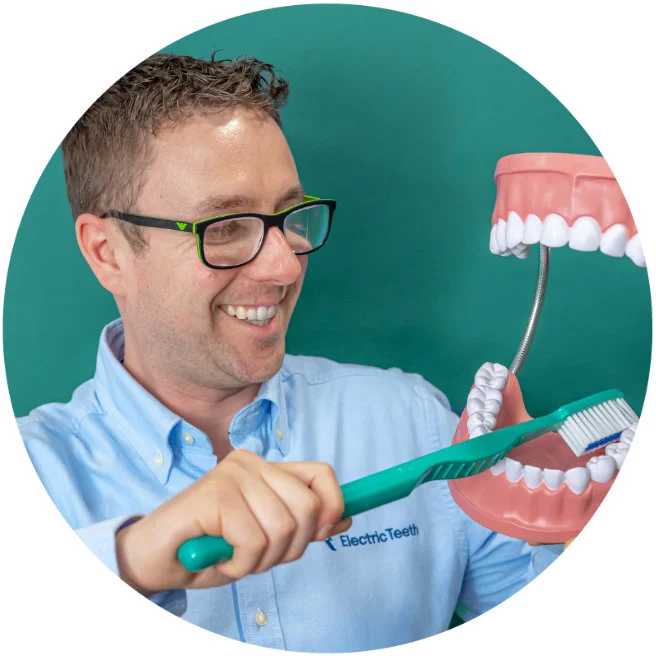

Hey!
Great site and awesome
Reviews!
Wonder what the difference between Philips HX6800/03 and Philips HX6800/04 ?
Hi Robert. I do believe that these are the same toothbrush. However, I believe the HX6800/04 is a European variant, meaning it would come with a 2 pin EU plug on the charger rather than a 2 pin UK plug.
There are a number of reasons why Sonicare might have issue a different part number like this for a toothbrush. Sometimes they can be the same product but made in different factories (or so I am led to believe). But, in this instance, I do believe it is the region of the world they are designed for/sold within.
This tooth brush is far too harsh, if there is a way to turn it down it is not easy to find. I would not buy it again. It is a VERY uncomfortable clean
Hi am Ronak I really appreciate your help or helps me see a brighter smile .You have really helped ,e John , I watch you or him on you YouTube you are really helpful.
Your most happiest
Ronak.
Thank you for your help
Glad I could help.